Description
Overcoming Malignant Melanoma
The Promise of Photodynamic Therapy and Other Innovative Therapies
Malignant melanoma is the most lethal form of skin cancer, responsible for approximately three out of every four deaths from skin cancer. This particular malignancy affects men and women equally. Lighter-skinned people are far more prone to receive the diagnosis than darker-skinned people, such as the indigenous inhabitants of Sub-Saharan Africa.
The global incidence of malignant melanoma has been rising steadily since the 1960s, especially among fair-skinned people. The highest recorded incidence of melanoma worldwide is in Australia; the melanoma-related death rate in that country is at least 100 times higher than in Asia. Excessive exposure to sunlight is regarded as the primary cause of most melanoma cases.
This ebook focuses primarily on cutaneous melanoma, those lesions that typically appear in the skin but may also rarely occur in the eye, mouth, or intestines. Part 2 discusses the various benefits of light-sensitizing treatments, or photodynamic therapy (PDT), as well as other photomedical applications, notably photodynamic diagnosis (PDD). Part 3 considers promising future directions for research on these innovative therapies, while Part 4 lays out the long-term control strategies that can help keep melanoma from developing and progressing into a life-threatening disease.
A key consideration in the treatment of melanoma is how much it has grown and how deeply it has penetrated into the skin. Most patients can be cured by either surgery or PDT, as discussed in Part 2, but only as long as the melanoma is detected at an early stage and has not grown deeply into the skin and lymph nodes. In the event that a melanoma has penetrated deeply or has spread to lymph nodes, however, the likelihood of a cure is greatly reduced.
In the case of PDT for cutaneous melanoma, the photosensitizer (light-sensitizing agent) is typically applied as a cream. The photosensitizer selectively accumulates in the abnormal or diseased tissues, before being activated at the site of action by fiber-optic illumination. Because the photosensitizer is preferentially absorbed by malignant tissue, and the light source is directly targeted on the lesion or tumor area, PDT achieves dual selectivity—not only hitting the lesion but also minimizing damage to adjacent healthy tissues and body structures.
Overcoming Malignant Melanoma explores a range of treatments that may be used in conjunction with Photomedicine strategies. For example, hyperthermia is an adjunctive strategy that entails heating the body or part of the body, such as the area surrounding a tumor as well as the tumor itself. This strategy has been shown to enhance the effectiveness of conventional cancer treatments, and also seems to synergize with PDT, thus helping to better treat the more aggressive forms of malignant melanoma.
Biologic therapies for malignant melanoma are also explored, and most of these are aimed at modulating the immune system. This strategy makes sense, since malignant melanoma is among the most immune-responsive of all cancers. The two biological agents with well-established therapeutic activity in patients with advanced melanoma are interferon-alpha (interferon) and interleukin-2 (IL-2).
Such innovative treatments also have the potential to be combined with photodynamic methods, as addressed in Parts 2 and 3. Indeed, it is the combination of light-based therapies with well-established treatments such as surgery, radiotherapy and chemotherapy that may hold the greatest promise for the successful treatment of malignant melanoma.
An excerpt from the ebook:
“PDT and laserthermia (the combination of laser therapy with heat or hyperthermia) have emerged as highly successful, targeted strategies for treating skin cancers and precancerous skin conditions. The treatment also achieves excellent cosmetic results as well. Indeed, in many instances, the recipients of such treatment end up looking better than they did before the diagnosis. In this section, we address some of the key research support for the assertion that PDT, photoimmunotherapy (PIT), and laserthermia are important options for the treatment of malignant melanoma.
“While it’s true that cutaneous melanomas (i.e., those occurring on the skin) respond quite well to PDT, the therapeutic benefits go well beyond that superficial level, even seeking out and destroying abnormal cells that are lodged deep within organs and tissues throughout the body. Far from being a treatment that’s only ‘skin deep,’ the therapeutic potential of PDT may extend to the whole body, at least when performed under the right conditions.
“PDT for malignant melanoma may be more successful depending on the particular photosensitizer used. A second-generation photosensitizer called Bremachlorin® has yielded excellent results when combined with surgery in malignant melanoma patients. For example, complete responses were reached in three out of four cases of patients with stage I and II melanomas who received PDT prior to surgery; the follow-up period was nine and 12 months.”
“Recognizing the central role of the immune system for the control of some cancers, scientists have begun investigating the use of PIT as a new therapeutic approach to malignant melanoma. In our approach to PIT, the photosensitizer is delivered through an infusion and treated with light as it is being infused into the body. Thus the photosensitizer is already activated before it becomes concentrated in the melanoma cells, causing specific light-induced changes in their membranes (photomodification) and eventual destruction though light treatment.”
Lastly, photodynamic diagnosis (photodiagnosis) may play a central role in the future prevention of melanoma and other skin cancers. By detecting precancerous skin growths, photodiagnosis provides vital information for anyone hoping to avoid the eventual development of a cutaneous melanoma or other types of skin cancer. This information can be used to help alert you, the patient, to the need to be more aggressively proactive in your efforts to ward off cancer, perhaps using a combination of nutritional, herbal, and innovative medical strategies.
The ebook’s appendix includes a special discussion about two light-sensitizing substances, a dietary supplement called Bremachlorophyll, and a unique medicine called Bremachlorin. Because of its diverse effects against cancer, Bremachlorin-PDT is likely to revolutionize the way Photomedicine is incorporated into modern cancer treatment.
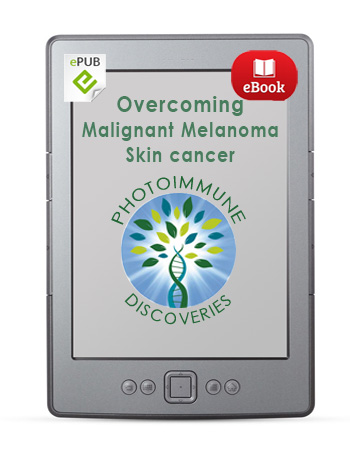
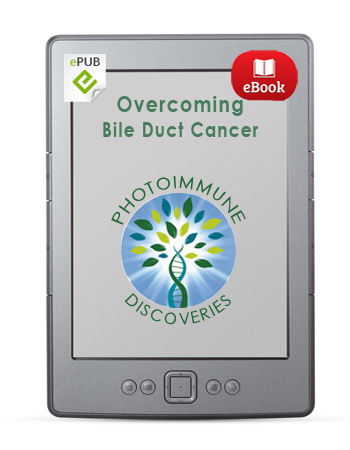
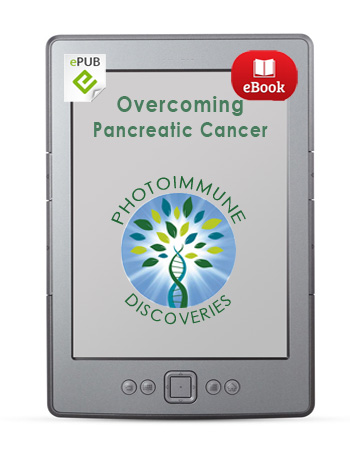
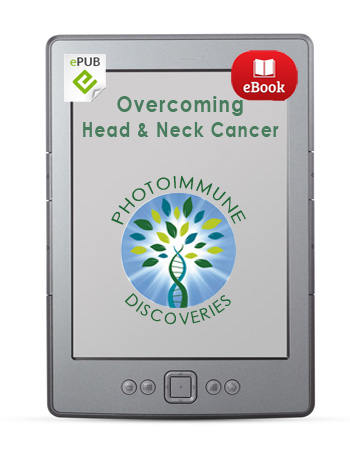
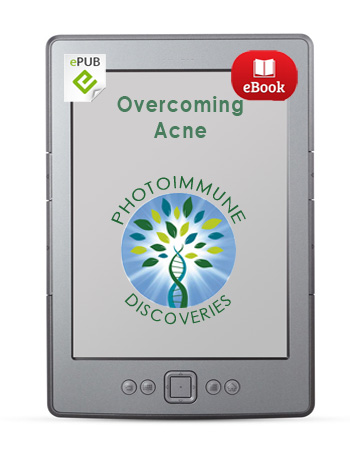

 English
English Français
Français Deutsch
Deutsch Nederlands
Nederlands